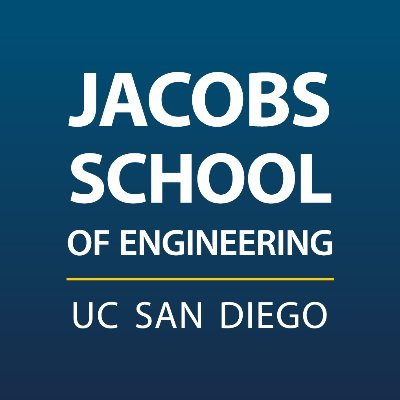News

May 31, 2016
In new program, UC San Diego engineering graduate students and MBA students team up to drive innovation
Nick Forsch relies heavily on clinician feedback for his research. As a bioengineering Ph.D. student at the University of California San Diego, he is developing computational tools to enable doctors to better understand their patients’ diseases. His experiences translating research to end users led Forsch to join a new program at UC San Diego that places Jacobs School of Engineering graduate students and MBA students in the same Rady School of Management classes including the Rady School’s signature Lab to Market program. This pilot program is part of the new UC San Diego Institute for the Global Entrepreneur that will launch June 2, 2016. Full Story

May 26, 2016
No. 1 From the Start
Bioengineers at the University of California San Diego have helped us understand why atherosclerosis develops and how it is impacted by blood flow. They have pioneered the development of very thin, small and flexible sensors that stick to the skin and monitor vital signs, such as the brain activity of a newborn. They also developed injectable hydrogels that can help muscle tissues heal after a heart attack. Researchers celebrated their achievements over the past five decades and looked to the future during a three-day 50th anniversary celebration May 19 to 21. Full Story

May 24, 2016
Bioengineering: Research landmarks
The faculty of the UC San Diego bioengineering department boast a number of achievements in a wide range of fields, gravitating around diagnostic tools and treatment and prevention, genomics, and regenerative medicine. Full Story

April 28, 2016
UC San Diego bioengineers create first online search engine for functional genomics data
University of California San Diego bioengineers have created what they believe to be the first online search engine for functional genomics data. This work from the Sheng Zhong bioengineering lab at UC San Diego was just published online by the journal Nucleic Acids Research. Full Story

April 18, 2016
Stretchable, flexible, wearable solar cells take top prize at Research Expo 2016
Solar cells that are stretchable, flexible and wearable won the day and the best poster award from a pool of 215 at Research Expo 2016 April 14 at the University of California San Diego. The winning nanoengineering researchers aim to manufacture small, flexible devices that can power watches, LEDs and wearable sensors. The ultimate goal is to design and build much bigger flexible solar cells that could be used as power sources and shelter in natural disasters and other emergencies. Full Story

April 12, 2016
UC San Diego Scientists Receive $9.5 Million NIH Grant to Combat Antibiotic Resistance
Physicians and bioengineers at University of California, San Diego, have received a five-year, $9.5-million award from the National Institute of Allergy and Infectious Diseases at the National Institutes of Health (NIH) to establish an interdisciplinary center to define the systems biology of antibiotic resistance. The program will be led by Bernhard Palsson, Distinguished Professor of Bioengineering and Pediatrics, and Dr. Victor Nizet, professor of pediatrics and pharmacy at UC San Diego. Full Story

March 21, 2016
Tiny Trees at Research Expo 2016 are High-Tech Flexible Sensors
The tiny trees on the image above, part of the artwork for Research Expo 2016, are actually sensors, fabricated by researchers in the lab of University of California, San Diego bioengineering professor Todd Coleman. The sensors are high-tech flexible sensors for medical applications, and can be used to monitor vital signs and brain activity. Full Story

March 8, 2016
New therapy could treat poor blood circulation caused by peripheral artery disease
Bioengineers and physicians at UC San Diego have developed a potential new therapy for critical limb ischemia, a condition that causes extremely poor circulation in the limbs and leads to an estimated 230,000 amputations every year in North America and Europe alone to prevent the spread of infection and tissue death. The new therapy could prevent or limit amputations for a condition that affects more than 27 million people and is a manifestation of advanced peripheral arterial disease. Full Story

March 2, 2016
Jacobs School of Engineering Faculty Earn Diversity Awards
University of California, San Diego Jacobs School of Engineering professors Tara Javidi and Todd Coleman have been awarded the 2015 UC San Diego Equal Opportunity/Affirmative Action and Diversity Award. Full Story
.jpg)
February 24, 2016
New Research Centers and 200+ Graduate Student Posters to be Highlighted at Research Expo 2016
Advances coming out of new industry-focused research centers at the University of California, San Diego Jacobs School of Engineering will be highlighted in faculty talks and in some of the more than 200+ graduate student posters that will be presented on April 14, 2016 at Research Expo. Full Story
